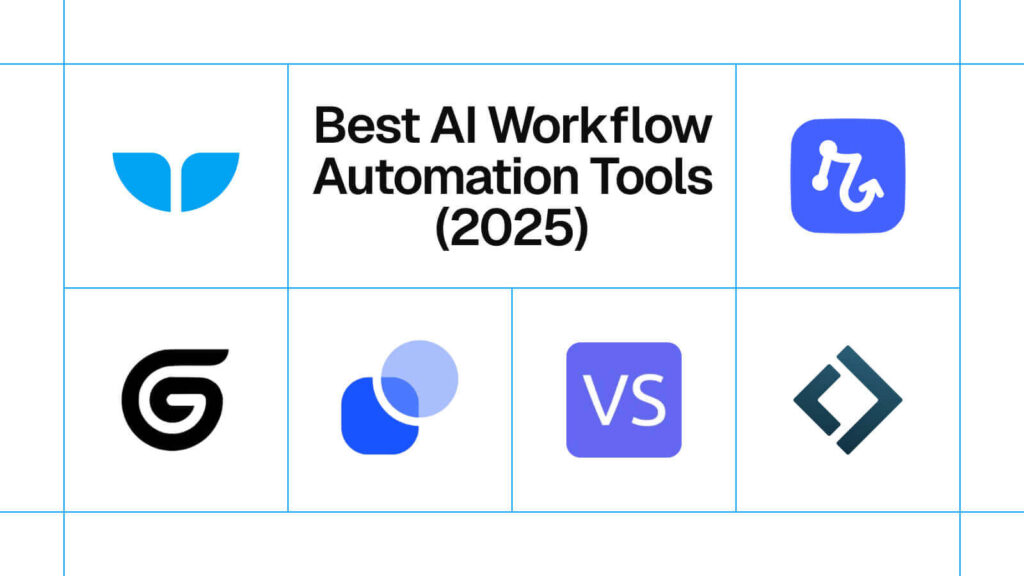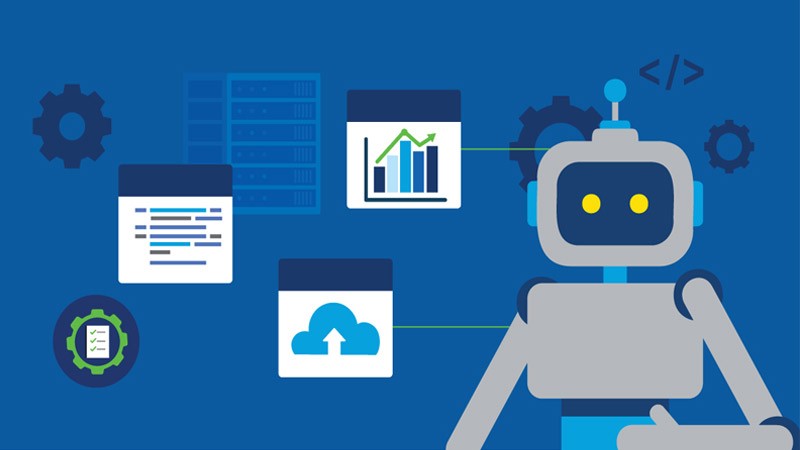In an age of rapid digital transformation, businesses are under increasing pressure to streamline processes, reduce manual work, and operate more efficiently. Enter AI workflow automation—the secret weapon for modern organizations. These tools harness artificial intelligence to create intelligent, self-operating workflows that save time, boost accuracy, and unlock growth potential.
In this guide, we’ll explore the top AI workflow automation tools you should be using in 2025, along with how they work, who they’re best for, and why now is the time to adopt them.
Introduction to AI Workflow Automation
AI workflow automation combines artificial intelligence with traditional automation platforms to create systems that can:
- Analyze data
- Make decisions
- Execute tasks across applications
Unlike basic automation, AI-powered workflows are adaptive, context-aware, and capable of learning over time.
Benefits of AI Workflow Automation
Why are businesses investing in AI-powered automation platforms?
- ⏱️ Speed: Automate repetitive tasks and reduce response time
- 🧠 Intelligence: AI identifies trends, suggests actions, and optimizes outcomes
- 💸 Cost Savings: Replace manual labor with scalable digital solutions
- 📊 24/7 Operations: Workflows continue even when your team is offline
- 🧩 Integration: Sync data between tools like CRMs, ERPs, and inboxes
Criteria for Choosing an AI Automation Tool
Before diving into tools, consider these essential features:
- Ease of Use: No-code or low-code interface for non-tech teams
- AI Capabilities: Support for machine learning, GPT models, or NLP
- Integration Flexibility: Works with your existing apps (Google Workspace, Slack, HubSpot, etc.)
- Scalability: Grows with your team and business needs
- Security: Offers encryption and compliance features for sensitive workflows
Tool 1: Zapier + OpenAI
Overview:
Zapier is one of the most popular no-code platforms, and its new integration with OpenAI’s GPT models takes automation to the next level.
⭐ Highlights:
- Classify emails and generate replies
- Enrich CRM data with AI-generated summaries
- Auto-create blog content from meeting notes
Best For:
- Startups, marketers, solopreneurs
Tool 2: Make (Integromat)
Overview:
Make offers a powerful visual editor with advanced conditional logic, and now includes AI modules that allow dynamic decision-making.
⭐ Highlights:
- Flexible drag-and-drop builder
- Complex if/then AI logic
- Integrates with ChatGPT and OCR services
Best For:
- Agencies, developers, automation enthusiasts
Tool 3: Microsoft Power Automate with Copilot AI
Overview:
Part of the Microsoft Power Platform, this tool uses Copilot AI to help build automations using natural language.
⭐ Highlights:
- Seamless with Excel, Teams, and Dynamics 365
- AI-based workflow suggestions
- Automate repetitive finance, HR, and reporting tasks
Best For:
- Enterprise Microsoft users, finance teams
Tool 4: Workato
Overview:
Workato combines enterprise-grade integration with intelligent automation and AI bots that trigger actions based on behavioral data.
⭐ Highlights:
- Real-time data sync
- Cross-system integrations (ERP, CRM, Slack, etc.)
- Custom AI-based decision workflows
Best For:
- Mid-size to large businesses
Tool 5: n8n (Self-Hosted, Open Source)
Overview:
n8n offers an open-source workflow engine you can fully customize, integrate with APIs, and even embed your own AI models.
⭐ Highlights:
- Self-hosting for security-sensitive data
- Supports GPT-4 and custom AI modules
- Developer-friendly with flexibility
Best For:
- Developers, privacy-focused companies
Tool 6: UiPath AI Center
Overview:
UiPath is a leading name in Robotic Process Automation (RPA). Its AI Center allows teams to deploy ML models directly into bots.
⭐ Highlights:
- Automate invoice processing, document parsing
- AI skill integration (classification, extraction, etc.)
- Large-scale enterprise automation
Best For:
- Back-office, finance, operations teams
Tool 7: Tines (Security/IT Focused)
Overview:
Tines is built for security teams and technical operations, automating incident response and workflow execution in SOC environments.
⭐ Highlights:
- Automate phishing alert handling
- Respond to infrastructure issues with AI triggers
- Low-code for DevOps and InfoSec teams
Best For:
- IT, DevOps, and InfoSec teams
Tool 8: Tray.io
Overview:
Tray.io is a scalable automation platform with a strong focus on API-level integrations and AI-based enrichment.
⭐ Highlights:
- Smart data routing and filtering
- AI for cleansing, transforming, or classifying data
- High-volume enterprise use cases
Best For:
- Growth teams, tech startups, API-heavy operations
Tool 9: Parabola
Overview:
Parabola is a no-code automation tool for data transformation, great for e-commerce businesses and operations teams.
⭐ Highlights:
- Integrates with Shopify, Airtable, Google Sheets
- Drag-and-drop for AI-powered data cleanup
- Automate sales and inventory updates
Best For:
- E-commerce, operations, DTC brands
Tool 10: Levity AI
Overview:
Levity helps you build AI-powered workflows without code, perfect for classifying emails, tagging images, or sorting documents.
⭐ Highlights:
- Train AI models for custom tasks
- Works with Gmail, Notion, Airtable, and more
- No coding or data science experience needed
Best For:
- Admin teams, customer support, marketing
Industry Applications of AI Workflow Tools
| Industry | AI Workflow Use Case |
|---|---|
| Marketing | Auto-segment leads, personalize content, manage ads |
| Customer Support | AI ticket routing, FAQ bots, feedback analysis |
| Human Resources | Resume screening, onboarding flows, leave tracking |
| Finance | Invoice processing, fraud detection, forecasting |
| IT Ops | Alert resolution, incident escalation, user provisioning |
Getting Started with AI Workflow Automation
Here’s a simple process to begin your AI automation journey:
- Map Out Repetitive Tasks: Identify bottlenecks or manual workflows.
- Pick a Starter Tool: Try Zapier or Make for low-risk experimentation.
- Create Your First Flow: Automate something small like an email sort or report.
- Track Performance: Measure time saved or error reduction.
- Scale Up: Move on to cross-department or customer-facing automation.
Conclusion
AI workflow automation isn’t just for tech giants—it’s for every business that wants to work smarter, not harder. From simplifying back-office processes to enhancing customer interactions, the right tool can turn hours of manual work into automated flows that run in the background.
Start small, pick the right tool for your team, and let AI transform the way you work—forever.


